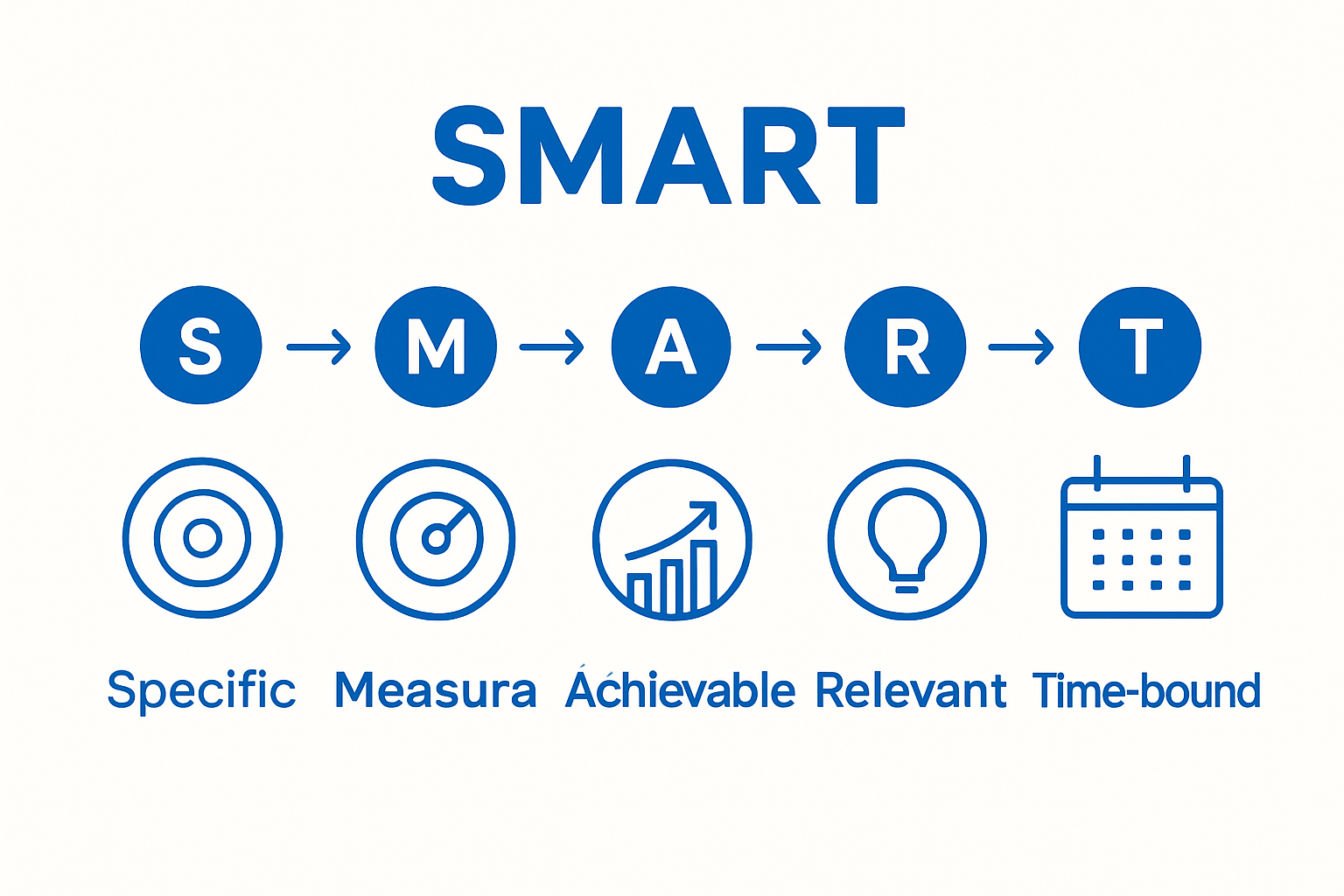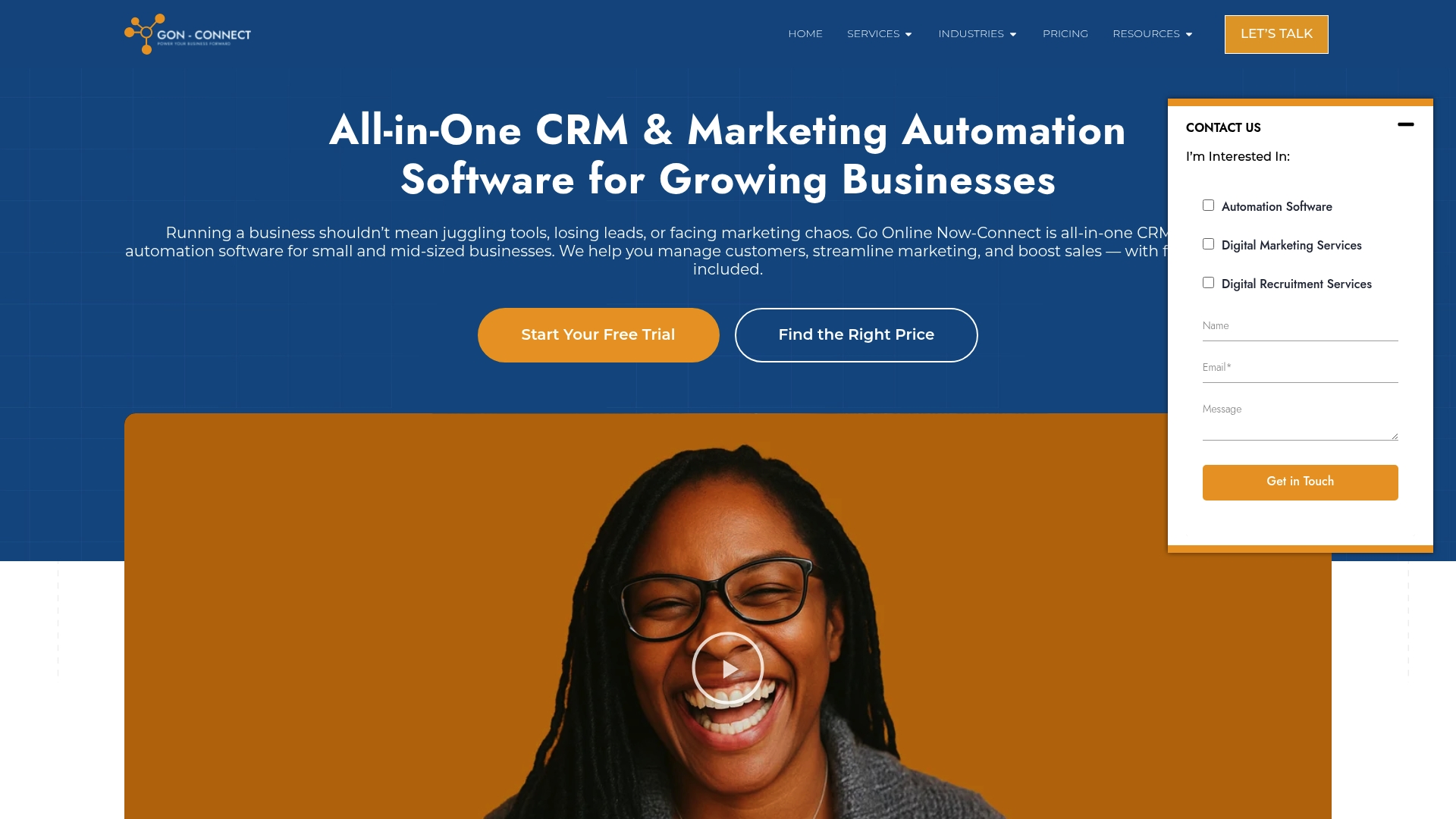Building a brand that actually stands out feels impossible when over 90 percent of businesses admit their marketing sounds just like everyone else. Most think a flashy logo or a trending hashtag is all it takes. The surprise is, the brands people remember are the ones that dig deep into their core identity and show what they value most. That shift is where lasting connections—and real results—start.
Step 1: Define Your Brand Identity and Values
Defining your brand identity and values serves as the foundational blueprint for all marketing efforts. This critical first step transforms your business from a generic service provider into a distinctive, memorable entity that resonates with your target audience. Your brand identity goes beyond a logo or color scheme – it represents the core personality and fundamental principles that distinguish your business in a crowded marketplace.
To effectively establish your brand identity, start by conducting deep introspection about your business’s fundamental purpose. Ask yourself pivotal questions: What problem do you genuinely solve? What makes your approach unique? What core principles guide your decision making? These reflections will help you craft a compelling narrative that goes beyond transactional interactions and connects emotionally with potential customers.
The process requires thoughtful articulation of your brand’s mission, vision, and values. Consider developing a concise brand positioning statement that encapsulates your unique value proposition. This statement should communicate who you are, what you do, whom you serve, and what differentiates you from competitors. Learn more about crafting a cohesive brand strategy to refine your approach.
Practically speaking, document your findings in a formal brand guidelines document. This internal resource will serve as a consistent reference point for all future marketing communications, ensuring your messaging remains aligned and authentic across various channels. Include specific elements such as:
- Your brand’s core values
- Personality traits that define your communication style
- Visual identity guidelines
- Key messaging pillars
Remember that your brand identity is a living concept. While the fundamental principles should remain stable, allow room for subtle evolution as your business grows and market dynamics shift. Regularly review and refine your brand positioning to maintain relevance and resonance with your target audience.
Successful brand identity development means creating a clear, consistent representation of your business that feels genuine and compelling. When done correctly, it transforms your marketing from mere promotional noise into a meaningful dialogue that attracts and retains ideal customers.
Below is a step overview table summarizing the main stages for marketing your brand effectively, with each step’s focus and expected outcome for business growth.
| Step | Focus Area | Key Outcome |
|---|---|---|
| 1 | Define Brand Identity & Values | Distinct brand positioning and emotional connection |
| 2 | Identify Target Audience | Clear customer personas and deeper engagement |
| 3 | Develop Comprehensive Marketing Strategy | Measurable goals and channel alignment |
| 4 | Execute Marketing Tactics Across Channels | Cohesive brand experience on multiple platforms |
| 5 | Measure and Analyze Marketing Efforts | Data-driven insights and continual improvement |
| 6 | Adjust Strategies Based on Feedback and Data | Agile adaptation for sustained business growth |
Step 2: Identify Your Target Audience Precisely
Identifying your target audience with precision transforms marketing from a scattered approach to a strategic, focused effort. This critical step moves beyond broad demographics and delves into understanding the psychological landscape of potential customers who will most benefit from your products or services.
Begin by constructing comprehensive customer personas that go deeper than surface level characteristics. These personas should capture not just age and income, but fundamental motivations, pain points, aspirations, and behavioral patterns. Insights from Stanford researchers confirm that businesses succeeding in customer segmentation experience significantly higher engagement rates.
To develop these personas, conduct thorough research using multiple methods. Leverage existing customer data, conduct interviews, analyze social media interactions, and review customer feedback. Pay special attention to understanding emotional triggers and decision making processes.
What keeps your potential customers awake at night? What solutions are they actively seeking? What language resonates with their experiences?
Utilize digital tools and analytics platforms to gather granular insights. Google Analytics, social media audience insights, and customer relationship management systems can provide rich demographic and behavioral data. Track metrics like:
- Engagement rates on different content types
- Purchasing behavior
- Online browsing patterns
- Interaction frequency with your brand
Remember that target audience identification is not a one time exercise. Markets evolve, consumer preferences shift, and new technologies emerge. Commit to regularly updating your audience personas and segmentation strategies. This dynamic approach ensures your marketing remains relevant and compelling.
Successful audience identification means you can craft messaging that feels personally crafted for each customer segment. When your marketing speaks directly to specific needs and aspirations, you transform generic communication into powerful, resonant connections that drive business growth.
Here is a checklist table to help ensure you complete all essential actions for identifying your target audience precisely and keeping your strategy effective.
| Action Item | Purpose | Status |
|---|---|---|
| Conduct customer persona research | Understand motivations, pain points, and behaviors | |
| Analyze customer data and feedback | Gain insights from existing interactions | |
| Leverage digital analytics tools | Gather demographics and behavior patterns | |
| Track engagement and conversion metrics | Measure what content and channels work best | |
| Regularly update personas and segmentation | Stay relevant as preferences and markets change | |
| Customize messaging for each segment | Create personal, resonant customer communication |
Step 3: Develop a Comprehensive Marketing Strategy
Developing a comprehensive marketing strategy transforms scattered efforts into a synchronized, purposeful approach that drives consistent business growth. This step requires synthesizing everything learned about your brand identity and target audience into a strategic roadmap that maps clear objectives, channels, and tactics.
Begin by establishing SMART goals: Specific, Measurable, Achievable, Relevant, and Time-bound.
 These goals will serve as your strategic north star, guiding every marketing decision. Instead of vague aspirations like “grow our business,” articulate precise targets such as “increase online sales by 25% within six months” or “acquire 100 new qualified leads per quarter.”
These goals will serve as your strategic north star, guiding every marketing decision. Instead of vague aspirations like “grow our business,” articulate precise targets such as “increase online sales by 25% within six months” or “acquire 100 new qualified leads per quarter.”
Explore a detailed digital marketing strategy plan example to understand how successful businesses structure their approach. Your strategy should encompass multiple marketing channels while maintaining a cohesive narrative. Consider a balanced mix that might include:
- Content marketing through blogs and articles
- Social media engagement
- Email marketing campaigns
- Search engine optimization efforts
- Targeted paid advertising
Each selected channel should align directly with your target audience’s preferences and behaviors. For instance, a B2B service might prioritize LinkedIn and professional content, while a consumer product brand might focus more on Instagram and visually engaging posts.
Budget allocation is another critical component of your marketing strategy. Determine realistic financial investments for each channel, tracking return on investment meticulously. Start with smaller experimental budgets, measure performance rigorously, and be prepared to pivot quickly based on actual results.
Remember that a comprehensive marketing strategy is not a static document but a living framework. Schedule quarterly reviews to assess performance, realign tactics, and incorporate emerging market insights. Successful strategies remain flexible yet focused, allowing businesses to adapt without losing sight of core objectives.
Step 4: Execute Marketing Tactics Across Channels
Executing marketing tactics across multiple channels requires strategic precision and synchronized effort. This step transforms your carefully developed strategy into tangible actions that create meaningful connections with your target audience. The key is creating a unified brand experience that feels consistent yet appropriately tailored to each platform’s unique characteristics.

Start by establishing a content calendar that maps out your marketing activities across different channels. This becomes your operational blueprint, ensuring regular, strategic communication that maintains audience engagement without overwhelming them. Explore strategic social media target market tactics to understand how successful brands create platform-specific approaches.
Your multichannel execution should prioritize platform-specific optimization. Each marketing channel demands a nuanced approach. Social media requires visually engaging, shareable content with platform-specific formatting. Email marketing demands personalized, segmented messaging. Website content needs search engine optimization and clear conversion pathways. Blog posts should provide substantial value, positioning your brand as a thought leader.
Implement a robust tracking and analytics system to monitor performance across all channels. Use tools that provide comprehensive insights, allowing you to understand:
- Engagement rates
- Conversion metrics
- Audience growth
- Content performance
- Return on investment
Be prepared to experiment and pivot quickly. Not every tactic will produce immediate results. Some channels might require several iterations before finding the right messaging and approach. Maintain flexibility while staying true to your core brand identity.
Consistency is paramount. Whether a potential customer encounters your brand on Instagram, receives an email, or visits your website, the experience should feel seamless and authentic. This approach builds trust, reinforces brand recognition, and gradually transforms casual interactions into meaningful customer relationships.
Step 5: Measure and Analyze Your Marketing Efforts
Measuring and analyzing marketing efforts transforms raw data into strategic insights that drive continuous business improvement. This critical step moves beyond simple number tracking, providing a comprehensive understanding of your marketing performance and revealing opportunities for optimization.
Establish a robust analytics framework that goes beyond surface level metrics. Explore the most critical marketing automation metrics to understand which data points truly matter for your business growth. Focus on metrics that directly connect to your original strategic objectives, such as customer acquisition cost, conversion rates, engagement levels, and revenue generated from specific marketing channels.
Implement advanced tracking tools that provide granular insights across different platforms. Google Analytics, social media native analytics, and specialized marketing intelligence platforms can offer comprehensive views of your marketing performance. Pay special attention to customer journey tracking, understanding not just where conversions happen, but the entire path customers take before making a purchase.
Your analysis should reveal critical performance indicators:
- Channels delivering highest return on investment
- Content types generating most engagement
- Customer segments showing strongest response
- Conversion bottlenecks in your marketing funnel
- Seasonal variations in marketing effectiveness
Develop a systematic approach to regular performance reviews. Schedule monthly or quarterly deep dive sessions where you critically examine your marketing data. These reviews are not just about celebrating successes but identifying areas for strategic refinement. Be prepared to make data driven adjustments, reallocating resources from underperforming channels to those showing promising results.
Remember that marketing analytics is an ongoing process of learning and adaptation. Treat each data point as a valuable insight that can help you understand your customers more deeply, refine your messaging, and continuously improve your marketing approach. Successful businesses view measurement not as a compliance exercise, but as a powerful tool for strategic growth.
Step 6: Adjust Strategies Based on Feedback and Data
Adjusting marketing strategies based on feedback and data is the hallmark of an agile, responsive business approach. This final step transforms your analytical insights into actionable improvements, creating a continuous improvement cycle that keeps your marketing efforts dynamic and effective.
Begin by developing a systematic review process that goes beyond surface level data interpretation. Understand the nuanced approach to marketing channel optimization to ensure you are making informed, strategic adjustments. Treat your marketing strategy as a living document, not a static plan. Every piece of data, customer feedback, and performance metric represents an opportunity to refine your approach.
Customer feedback becomes a critical component of your strategic adjustment. Implement multiple feedback collection mechanisms such as surveys, direct customer interviews, social media sentiment analysis, and review platform monitoring. Pay close attention to both quantitative metrics and qualitative insights. Sometimes, a single customer comment can reveal more about your marketing effectiveness than hundreds of data points.
Your adjustment strategy should focus on several key areas:
- Reallocating marketing budget based on channel performance
- Refining messaging to better resonate with target audience
- Updating customer personas with new behavioral insights
- Experimenting with new marketing tactics
- Addressing specific pain points revealed through feedback
Maintain a culture of experimental adaptability. Not every adjustment will yield immediate results, and that is perfectly normal. Create a structured approach to testing new strategies, using controlled experiments that allow you to measure specific outcomes. Set clear hypotheses, define success metrics, and be willing to pivot quickly if initial results do not meet expectations.
Successful strategy adjustment requires a delicate balance between data driven decision making and creative intuition. While numbers provide critical guidance, never lose sight of the human element that drives customer behavior. Your ability to blend analytical insights with empathetic understanding will ultimately determine your marketing success.
Stop Wasting Time on Scattered Marketing Efforts—Get Everything You Need in One Place
Are you struggling to bring your marketing plan to life, despite carefully defining your brand and pinpointing your target audience? The article highlighted how even the strongest strategy can fail when tools are scattered or too complex for growing small businesses. Many companies like yours want to connect every step of your brand growth—from automation to analysis—for real results, not just busywork.
Want a smarter way to cut through overwhelm and get proven results? Explore our Digital Marketing solutions tailored for SMBs who need more than theory. We combine vital marketing automation, CRM, and campaign expertise into one seamless platform.

Ready to see what focused marketing can do for your brand starting today? Visit Go Online Now-Connect to access every tool, strategy, and real human support you need to execute your marketing without the usual frustration. Start your journey to measurable business growth and let us handle the complicated stuff—for good. For more hands-on support, discover our Virtual Assistance services so you can spend less time troubleshooting and more time growing your business.
Frequently Asked Questions
How can I effectively define my brand identity?
To effectively define your brand identity, start by reflecting on your business’s core purpose, what problem you solve, your unique approach, and the guiding principles behind your decisions. Document these insights in a brand guidelines document to maintain consistency across your marketing efforts.
What is the importance of understanding my target audience?
Understanding your target audience is crucial as it allows you to create marketing messages that resonate with their specific needs, motivations, and pain points. This precise targeting transforms generic communications into meaningful connections, driving stronger engagement and business growth.
How do I create a comprehensive marketing strategy?
To create a comprehensive marketing strategy, start by setting SMART goals that guide your efforts. Then, detail the channels and tactics you plan to utilize, ensuring they align with your target audience’s preferences. A balanced mix of content marketing, social media engagement, email campaigns, and SEO will help create a cohesive narrative.
What metrics should I focus on while measuring marketing efforts?
Focus on metrics that directly relate to your strategic objectives, such as customer acquisition cost, conversion rates, engagement levels, and return on investment from different marketing channels. This comprehensive analysis will provide insights into performance and areas for improvement.
Recommended
- How To Build a Successful Marketing Strategy – Go Online Now
- 10 Essential Online Marketing Strategies for Small Businesses
- DIY vs. Agency: Assessing Social Media Marketing Skills
- Understanding Brand Voice: Choosing Social Media Partner
- Mastering the Product Marketing Approach: Proven Strategies to Elevate Your Brand

